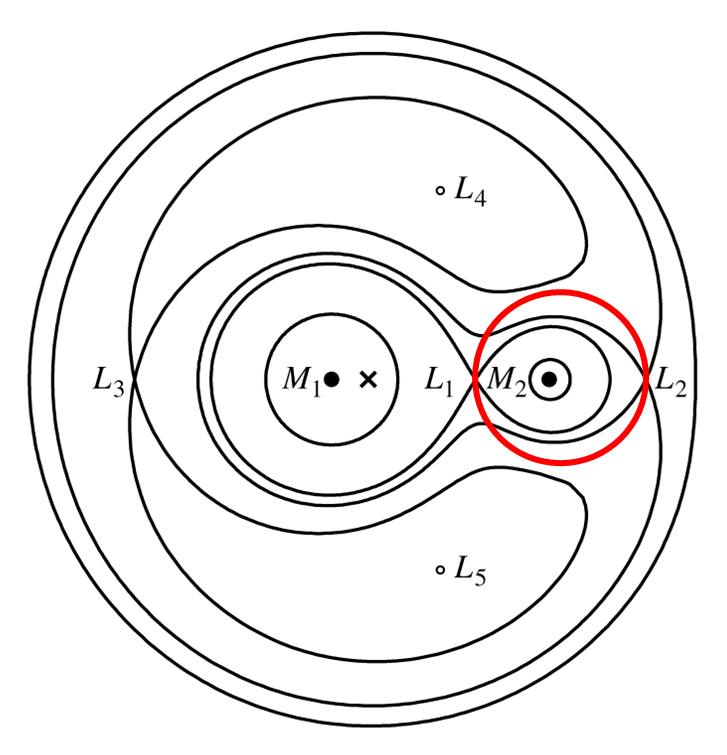PX282 - J9 - moons
-
mercury and venus: no moons
-
earth: a single large moon, believed to have been formed from a giant impact
-
mars: two small captured asteroids - phobos and deimos
-
phobos orbits faster than mars spins (0.3 days vs ~1 day)
-
the tidal synchronization is spinning up mars and causing the orbit of phobos to decay
-
phobos will eventually break apart when it fills its roche lobe/hill sphere
roche limit

image: Carrol & Ostile, An Introduction to Modern Astrophysics, 2007
- it is the limit to orbital separation, where the self gravity is smaller than the differential gravity from the planet
where,
and
- the roche limit:
where,
-
this is for a rigid body that maintains its shape
-
for a fluid body (in hydrostatic equilibrium), the the pre-factor of
changes to -
slow rotation of mercury and venus means that any moon within their hill spheres would spiral in, and eventually be destroyed at its roche limit
-
also, their proximity to the sun means very small hill spheres